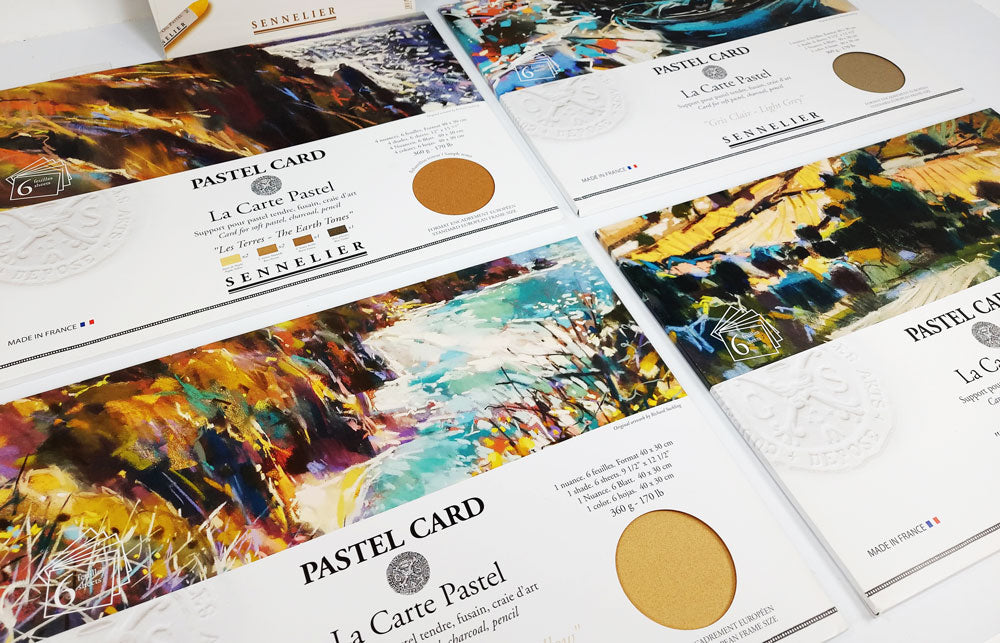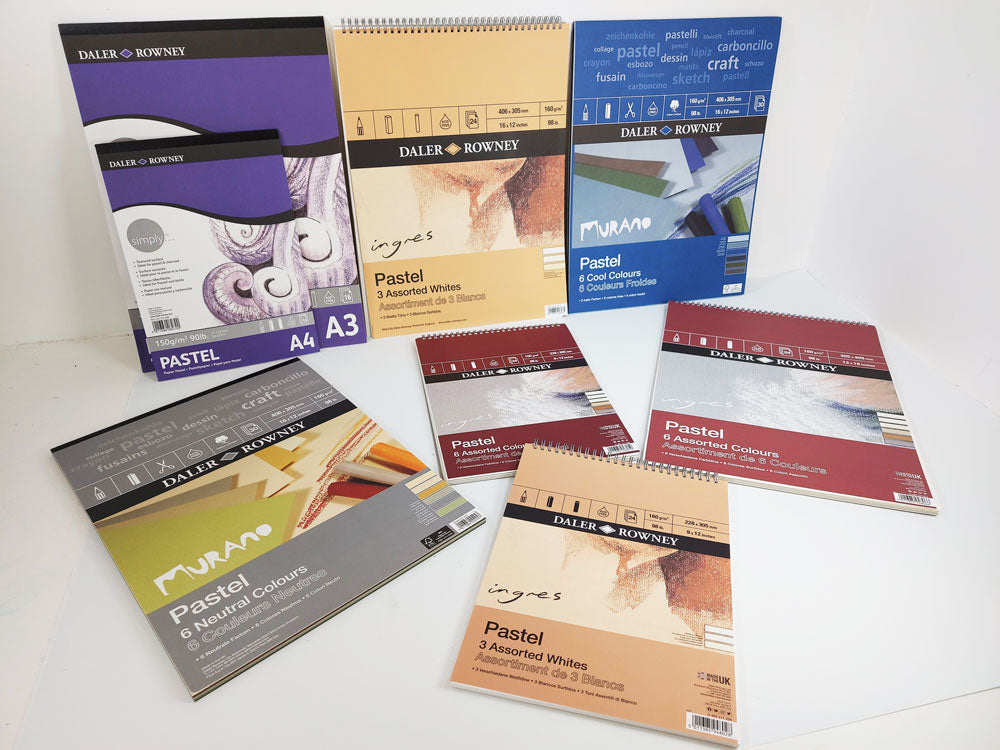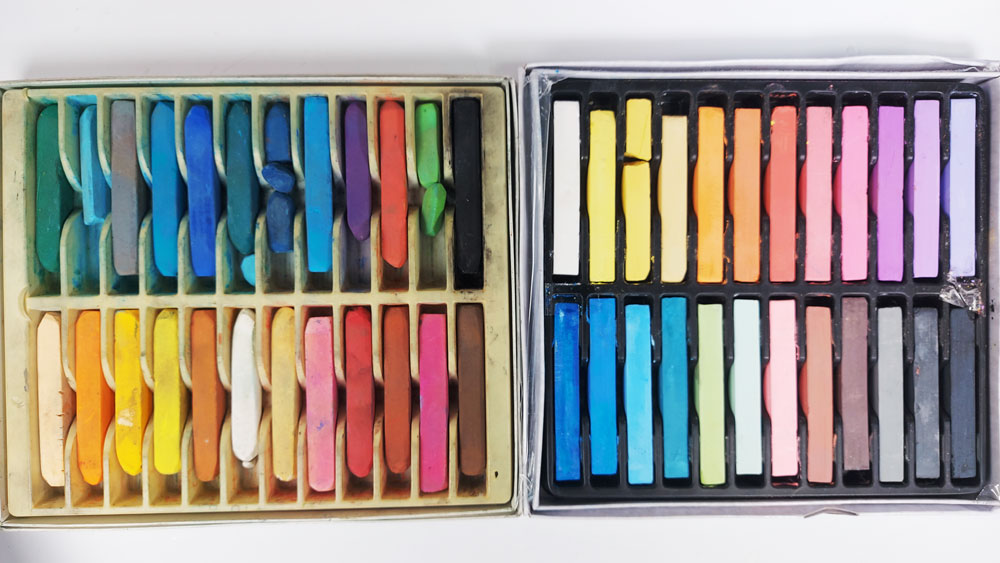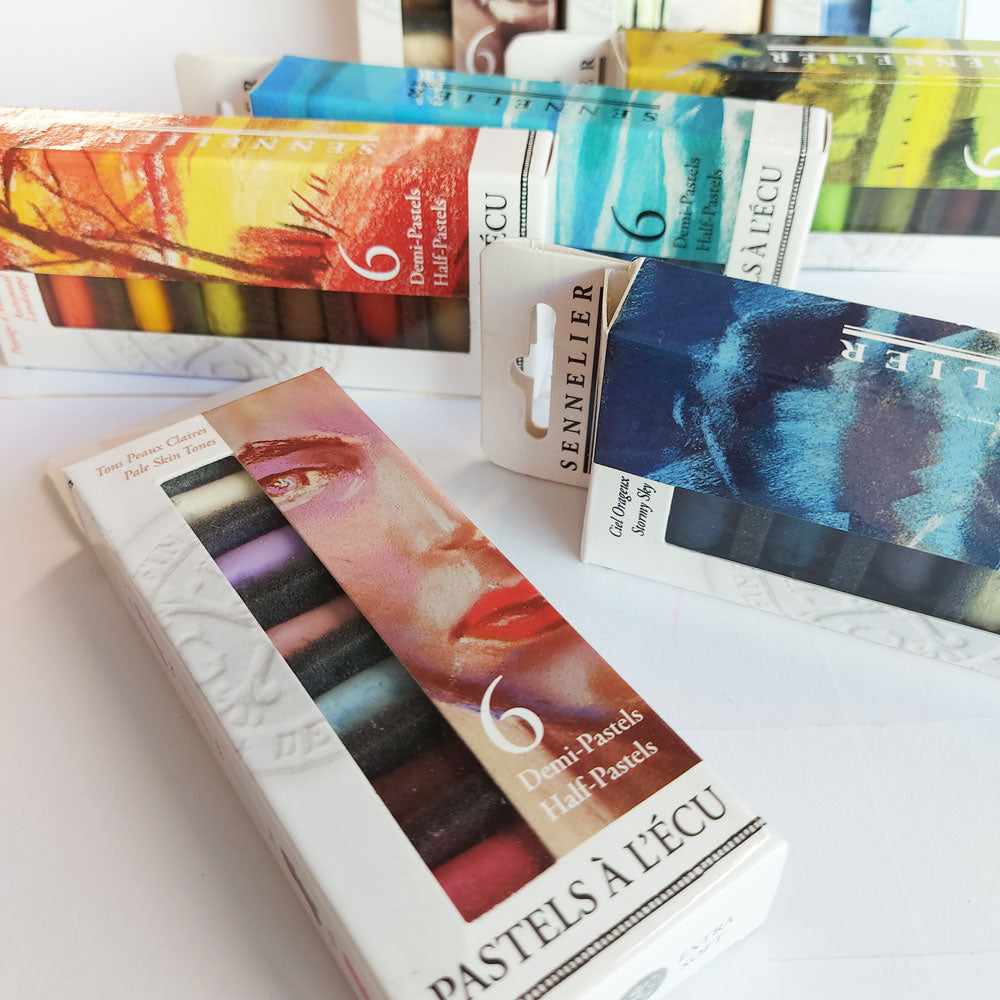Your Cart is Empty
FREE DELIVERY ON ORDERS OVER £50.00 - TO MOST UK POSTCODES
FREE DELIVERY ON ORDERS OVER £50.00 - TO MOST UK POSTCODES

FREE DELIVERY ON ORDERS OVER £50.00 - TO MOST UK POSTCODES
FREE DELIVERY ON ORDERS OVER £50.00 - TO MOST UK POSTCODES
by Ellie Jakeman February 22, 2024
Soft pastels are a versatile and expressive medium in the realm of visual arts. Comprising pure pigment, chalk, and a minimal binder, these art materials deliver intense and vibrant colours. Soft pastels are known for their soft, velvety texture, allowing artists to create rich, broad strokes or intricate details on various surfaces like pretreated canvas, heavyweight, rough textured watercolour paper or textured pastel paper. Their blendability and ease of layering make them conducive to creating nuanced shades and gradients. There are many pastel brands on the market. The handmade pastels are the softest, most pigmented and the most expensive, however there are lots to choose from for the beginner pastel artist which are still great quality.

A study in soft pastels of Edgar Degas's 'Dancer adjusting her shoe, ribbons'
Artists often appreciate the immediacy and tactile nature of working with soft pastels, as they enable the exploration of a wide range of artistic styles, from impressionistic to more detailed and realistic renderings.
Basic materials you will need:

Soft pastels are dry and slightly dusty so they need a good texture paper or pastel board they can bind to. Smooth paper will not work as the pastel will just fall off.


Begin with a light sketch and underdrawing using a graphite pencil, pastel pencils or you could use a Conté à Paris Carres Crayon as these pastels are slightly harder than the soft pastels. This will serve as a guideline for your pastel application, or if you are confident go straight with your soft pastels.

Soft pastels come in a wide range of colours. Select the colours you need for your artwork. Consider starting with a limited colour palette and gradually expanding your repertoire of colours as you become more comfortable with the medium. Create a test palette sheet first by swatching out all your colours to see the variations of tone. Once you have all your colours laid down you can see their vibrancy and practise your colours to create new tones, laying down your light colours first.
Start with lighter colours and gradually build up layers, working towards darker tones. Layering allows you to create depth and richness in your artwork. The more layers you apply of the same colour, the more vivid your colours will look. However avoid layering too many different colours as this will make your work look dull and moody.

Soft pastels can be used for both broad strokes and fine details. For detailed work, you can use the edge of a pastel stick or for very detailed work you can use a pastel pencil.

Correct mistakes or create highlights by using a Winsor & Newton Kneaded Putty Rubber or a vinyl eraser. Soft pastels can be lifted off the paper more easily than hard pastels.
Once your soft pastel drawing is complete, consider using a fixative spray to set the pastel and prevent smudging. Follow the instructions on the fixative product for proper application. Keep in mind that fixatives can alter the appearance of the pastel, so test on a small area first. If you hold your fixative spray too close to your work it will darken your pastel colours considerably. Aim to use light strokes at the recommended distance from your work. You can also use fixatives whilst you are working if you wish to keep layers from moving or smudging.

Here are some links to pastel fixatives:
Pastel work can be delicate, so consider framing your artwork under glass to protect it. Ensure that the glass does not touch the pastel surface, either by using a deep mount board or spacers.
Soft pastels can be messy, so keep a tissue or rag nearby to clean your hands as needed. Consider wearing an apron or smock to protect your clothing.

soft pastels offer a wide range of possibilities. Experiment with different techniques, colour combinations, and subjects to develop your skills and style.
Remember, soft pastels are a forgiving medium that encourages experimentation. Allow yourself to explore and enjoy the vibrant expressive qualities of soft pastels in your artwork. Most brands of soft pastels will work together so the possibilities of colour experimentation are endless.

Soft pastels:

Accessories:

I have had a strong interest in the visual and creative arts since a very early age. After completing an Art and Design Degree and Post graduate studies I have taught Art and Design, Fashion and Textiles, Textile design , Fine Art print and Illustration for over 20 years. Before teaching I was a freelance artist and illustrator and decided 4 years ago I would return to freelance and commissioned work. I have created many domestic and commercial murals for hospitals and hospices. I work part time for ARTdiscount as a content creator and product tester.
Comments will be approved before showing up.
by Izzy Latimer April 24, 2024
by Ellie Jakeman April 18, 2024
MEEDEN is a company known for providing high-quality art supplies and tools to artists and enthusiasts. They are committed to inspiring creativity and supporting artistic endeavours through their range of products, which include Easels, Artist Supplies storage drawers, Table Easels, and Artists’ Print rack with castors.
by Joseph Short April 10, 2024
Sign up to get the latest on sales, new releases and more …